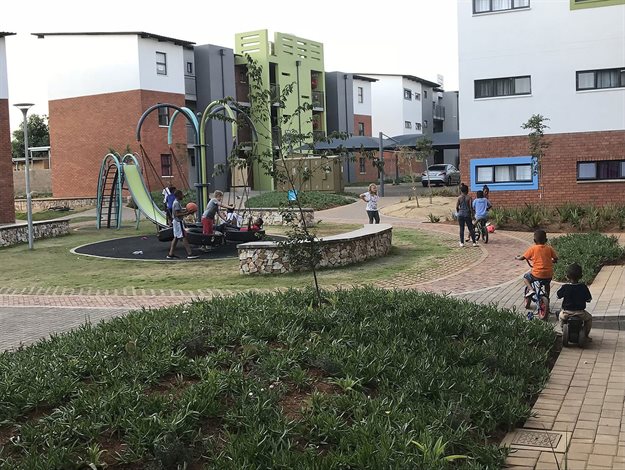Build-to-rent investors can expect returns of around 9.5% net yield and a 2-3% capital growth in year one.

There are many emerging middle-class South Africans that are not yet able to buy afford their own homes and might not have access to public housing. So, despite an oversupply of some types of properties in certain areas, there is still a national backlog of people looking for quality, affordable homes.
The BTR development model focuses on properties specifically designed for the rental market. Managed by specialists, BTR units typically have a single owner such as residential build-to-rent funds or institutional investors, such as life insurance companies. The developments can either comprise of a variety of tenure mixes (some retail and commercial units along with residential) or be built as purely residential. In tenure mix models, BTR is proving to be a great example of what is being termed the ‘co’ revolution (co-living, co-working spaces).
In the USA, the BTR format (or multi-family housing as it is called there) has created 6.3 million new apartments since 1992 while since 2012, the UK has 148,000 units completed or under construction. This rapid and exponential growth over the past two years shows no signs of slowing down if the units planned for the next three years do take place. The success of this trend elsewhere is promising for South Africa; specifically with the particular set of housing challenges that we face.
One of the reasons for this is that the greater financial firepower behind BTR investments enables access to affordable housing in high-value, urban locations that might otherwise have been inaccessible. The model enables developers to access valuable sites that can support the density and sustain the needs of a growing community. The unlocking of these locations for affordable housing can show massive benefits for young people and families wanting to live close to work and school.
When done properly, BTR is driven by purposeful design. At its core, the development should build communities.
The tenants and communities are at the heart of the purposeful design of BTR developments; making this sort of property investment a powerful solution for a market in need of affordable, safe, convenient homes. Tenants feel like they are part of the whole development, not just their residence and the operational efficiencies lend themselves to wider community interaction. Unlike many other big rental portfolios or, for example, student housing, a successful BTR development provides long-term residential accommodation.
BTR is all about long-term tenancy security, which benefits both the tenant and owner. With other types of rental accommodation, tenants generally don’t know when the private owner will sell the unit and they have to move on. In a BTR community, theoretically you can stay on for five or ten years for example; if you pay and play by the rules.
The key to success is creating a place where people want to stay for longer. The entire service offering, community building, neighbourhood events and facilities help to bring people together and contribute to that pull for tenants.
Purposeful design also lends itself to more modern forms of construction, meaning faster build rates and better-quality finishes. Sustainable building methods make it a winning option on many levels.
The global trends also show us that BTR has a rapid absorbency rate. This is particularly good for rapid growth in an area that needs impactful regeneration. While South African developers need to be sensitive to the issue of gentrification, and historic land ownership in key areas, BTR does give cities the opportunity to effectively and quickly uplift problem areas and give them the means to build communities within safe, affordable housing developments.
In South Africa, there are currently hybrid BTR models, designed to let local developers feel out the market. The Urbika Lifestyle Estate in Ekurhuleni is an example of one of these; with the first phase comprising of 201 BTR apartments which has had an occupancy rate of approximately 80% since the first 90 apartments were completed and opened for rental.
With proof of concept already showing signs of success and long-term investment returns being proven on a hugely needed commodity in South Africa, BTR is something property investors should be exploring in an unpredictable market.